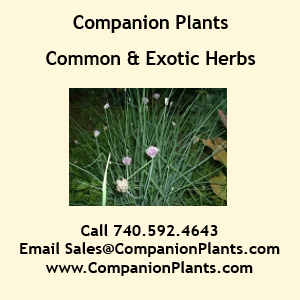Lavender is native to Europe. These plants are prized for their fragrant lavender flowers, which are used for perfume and sachets, and their gray-green aromatic foliage. This medicinal herb is perennial and resistant to drought. They must be pruned only once annually and don’t need fertilized soil. Place lavender in areas with plenty of sunlight or under grow lights. Additionally, lavender is tolerant to some pests and diseases and is best harvested in the morning.

Tips for Growing Lavender in a Greenhouse or as a Houseplant
Placement
For indoor growing, lavender should receive as much light as possible. It will do best in a south-facing window or where it can get a minimum of three to four hours of direct sunlight. Rotate the pot weekly for uniform growth and flowering. Without enough light, the lavender plant will produce weak, spindly growth, will cease to produce flowers, and it will be more susceptible to disease. Indoors, good ventilation and air circulation are important, but do not place the plant where it will be exposed to the direct flow of forced-air heat. Ideal indoor temperatures from spring through mid-fall are 50 to 55 degrees F at night and 70 degrees F during the day. During the late fall through winter, temperatures should be cooler: 45 to 50 degrees F at night and 60 to 65 degrees F during the day. The lavender plant will benefit from being moved into a semi-shaded area outdoors after all danger of frost is past. In the spring, it may be planted outside in a sunny area. When mature, the plant can take temperatures down to 10 degrees F.
Watering
Drench thoroughly when watering and allow the soil to become slightly dry between waterings. Check soil moisture by feeling the soil with your finger. Over- watering and allowing the soil to stay constantly moist may cause rot. However, do not allow the soil to go completely dry, or the lavender will react with yellowing lower leaves. If the lavender is moved outside in the spring, be mindful that it will dry out more quickly and will need watering more often.
Pruning
Cutting branches for flower harvest causes new growth to sprout and promotes bushiness. Tip prune occasionally if more bushiness is desired. Be aware that flowers are produced at the branch tips and constant tip pruning will reduce flowering.
Fertilizing
Fertilize with all-purpose, water-soluble fertilizer at half strength every four weeks during spring and summer.
Potting
Repot after one year or in early spring into an 8″ pot, using good-quality potting soil.
Toxicity
This plant should not be eaten.
Fun Facts About Lavender
Lavender Has Many Uses
The name lavender originates from the Latin verb “lavare,” which means “to wash.” Its word origin holds true in the ways that we use lavender today. Because of its clean scent, this herb is an extremely popular ingredient in products we use to bathe, including shampoo, facial cleansers, and hand soap. It’s also used in cleaning products for our homes. In addition, it’s one of the most popular essential oils.
One of the most important lavender facts is it has many medicinal uses too. Lavender can soothe burns, induce sleep, reduce anxiety, and stress, and treat aching muscles and joints. Like many other herbs, you can enjoy lavender’s fresh flavor and fragrance in various recipes, including cakes, lemonade, and cookies.
Lavender Has Ancient Roots
Though it’s popular worldwide, lavender originated in the Mediterranean region, northeast Africa, and southwestern Asia, where it has grown for over 2,500 years. In ancient Egypt, lavender was used during the mummification process to perfume the corpse. On the other hand, the ancient Greeks quickly noticed lavender’s medicinal properties, using it to ease ailments including headaches and indigestion. During the Black Plague of the 16th century, lavender oil was used to ward off the dreaded disease. Bunches of the plant were also sold in the streets to mask the smell of the dead.
Lavender Is Highly Symbolic
Lavender represents purity, devotion, serenity, and calmness. These themes are often related to the ways lavender is used. Calmness and serenity point toward lavender’s uses in aiding sleep and easing anxiety. Purity is shown through lavender’s use throughout history in cleaning and its associations with cleanliness. A romantic lavender fact is that it symbolizes devotion, which makes it a popular choice for flower arrangements and wedding bouquets.
There Are Hundreds of Varieties of Lavender
When you think of lavender, common or English lavender likely comes to mind because it’s the one usually shown on products or grown in picturesque lavender fields. However, according to the U.S. Lavender Growers Association, there are over 45 species of lavender and more than 450 different varieties. These include French, Portuguese, and fringed lavender. Heat tolerance, cold hardiness, size, and blooms vary quite a bit, so research which ones will grow best in your region and garden.
Lavender Comes in Multiple Colors
Given that this plant has the same name as a color, you might assume that its spikes of flowers only come in shades of purple. While this is true of many lavender varieties, you can also find the flowers in white, yellow, and even pink. The flower’s color doesn’t affect the plant’s fragrance.
Related Articles & Free Email Newsletter Sign Up
How to Grow Pineapple in a Greenhouse
The Best Plants to Grow in a Greenhouse
Tropical Pitcher Plants for your Home and Greenhouse




Comment here